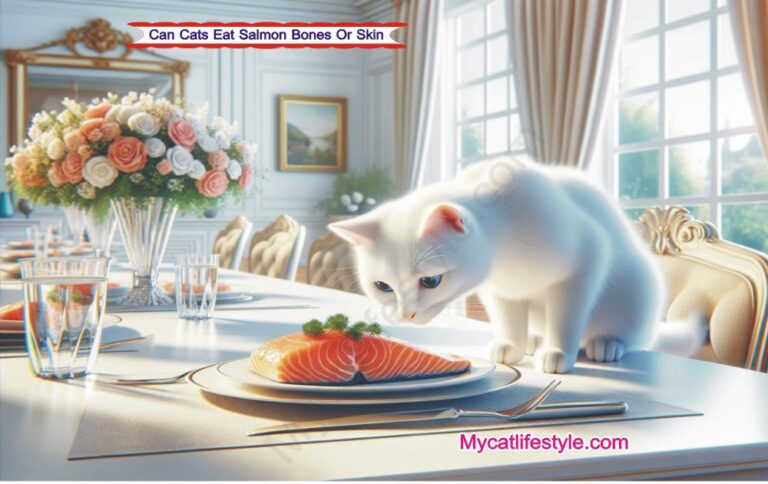How Often to Give Cats Tuna – A Comprehensive Guide
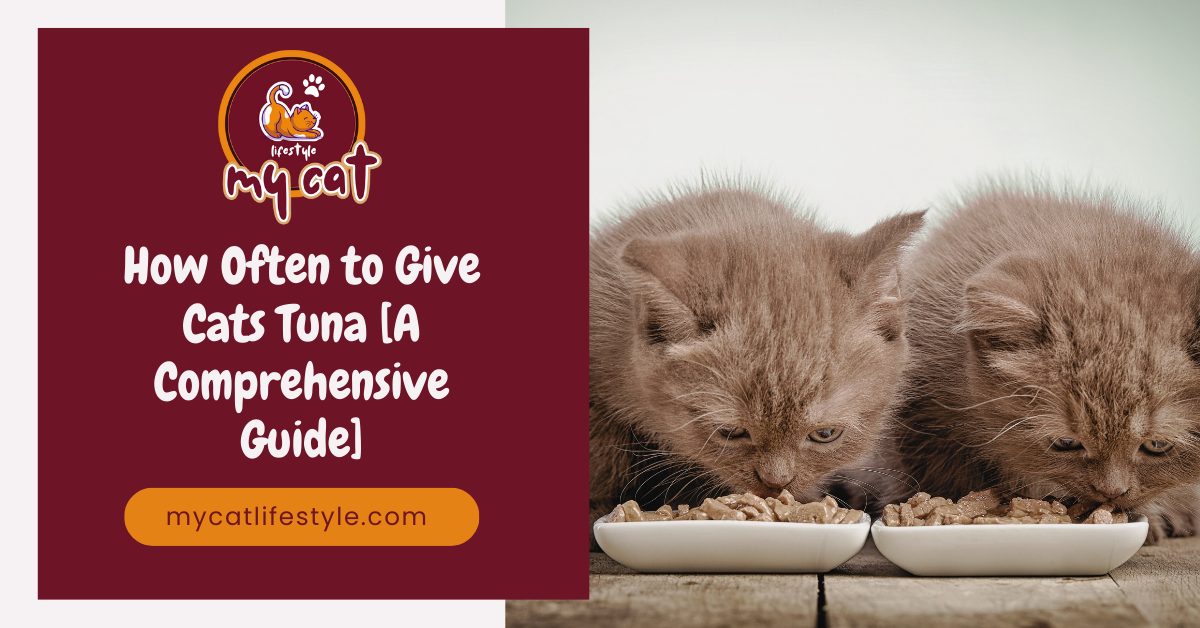
When it comes to indulging our feline friends with a special treat, tuna often comes to mind. Its strong aroma and palatable taste make it a favorite among many cats. However, as cat owners, we must ponder, “How often is it safe and healthy to give cats tuna?” While tuna can be a delightful treat, its frequency and portion size are crucial to maintaining a cat’s overall health and nutritional balance.
Tuna, when given in moderation, can be a good source of protein and omega-3 fatty acids, which are beneficial for a cat’s skin and coat. However, it’s essential to understand that not all tuna is created equal, and feeding it as a part of a cat’s diet comes with considerations.
This article will explore the guidelines for feeding tuna to cats, focusing on the balance between offering a tasty treat and ensuring our pets receive a well-rounded diet. Stay tuned as we dive into the specifics, ensuring your furry companion enjoys their fishy feast without compromising their health.
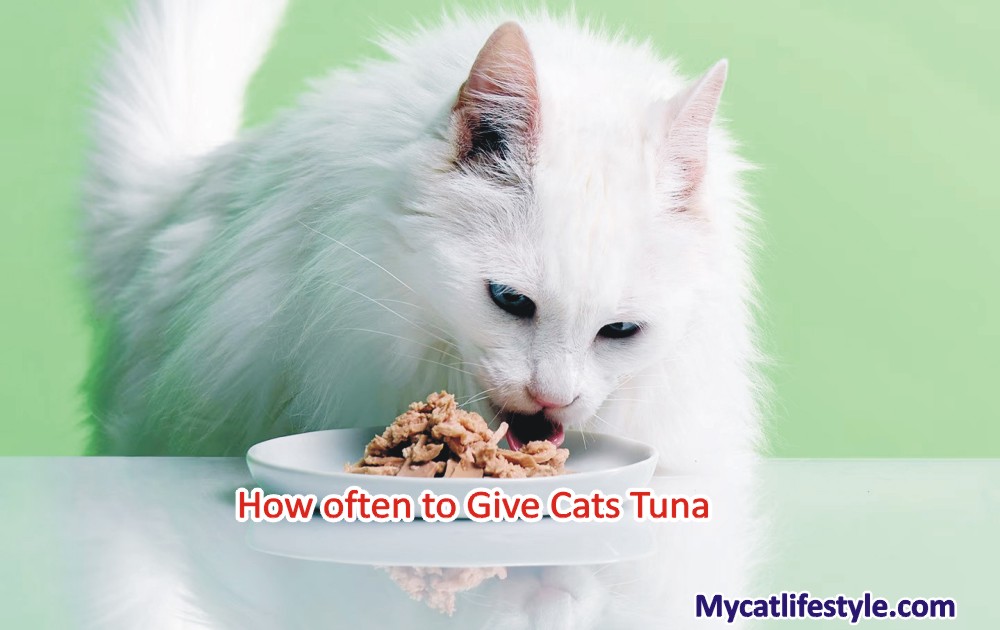
How Often to Give Cats Tuna?
When contemplating how often to treat your cat to tuna, moderation is key. Tuna should not be a daily dietary staple but rather an occasional treat. Experts generally recommend that tuna, especially the kind intended for human consumption, should make up no more than 10% of a cat’s overall diet. This guideline helps prevent nutritional imbalances. Ideally, incorporating tuna into your cat’s diet once every week or two is a safe practice, ensuring it remains a special treat without compromising their health.
A Cat’s Natural Diet
Understanding a cat’s natural diet sheds light on why moderation is crucial when feeding them tuna. Cats are obligate carnivores, meaning their bodies are designed to digest and utilize nutrients from animal-based proteins efficiently. A balanced diet for a cat typically includes a mix of proteins, fats, vitamins, and minerals, closely mimicking what they would consume in the wild. Commercial cat foods are formulated to meet these nutritional needs, whereas tuna, lacking in certain essential nutrients like vitamin E, taurine, and arachidonic acid, can lead to deficiencies if overfed.
Can Cats Get Addicted to Tuna?
Yes, cats can develop a strong preference, or “addiction,” to tuna. The rich flavor and aroma of tuna can make it highly appealing, leading some cats to refuse other types of food. This can pose a risk of nutritional deficiencies since tuna alone does not provide a complete and balanced diet for cats. Therefore, it’s crucial to introduce tuna as an occasional treat and not a regular part of their diet.
How Often Can You Feed Tuna Cat Food?
Tuna-formulated cat food, unlike tuna for human consumption, is designed to meet more of a cat’s nutritional needs and can be fed more regularly. However, it’s still important to ensure variety in your cat’s diet. Feeding tuna-flavored cat food as part of a rotation with other flavors and protein sources is advisable, preventing flavor fatigue and ensuring a range of nutrients. Always refer to the feeding guidelines on the cat food packaging and consult with a veterinarian for a tailored feeding plan.
Can You Feed Canned Tuna?
Feeding cats canned tuna intended for humans should be done with caution. Canned tuna in water can be a safer option than tuna in oil, but it should still be treated as an occasional treat rather than a dietary staple. Moreover, canned tuna contains higher levels of sodium and mercury, which can be harmful to cats in large amounts. Always choose low-sodium varieties and avoid seasoned or flavored tuna, which can contain ingredients toxic to cats.
How to Feed Canned Tuna to Cats
When feeding your cat canned tuna, opt for a small amount mixed with their regular cat food. This can help satisfy their craving for tuna while ensuring they receive the nutrients from their complete diet. Ensure the tuna is in water, not oil or brine, and has no added salt or spices. A teaspoonful mixed into their food or offered as a separate treat is sufficient.
Can Kittens Have Tuna?
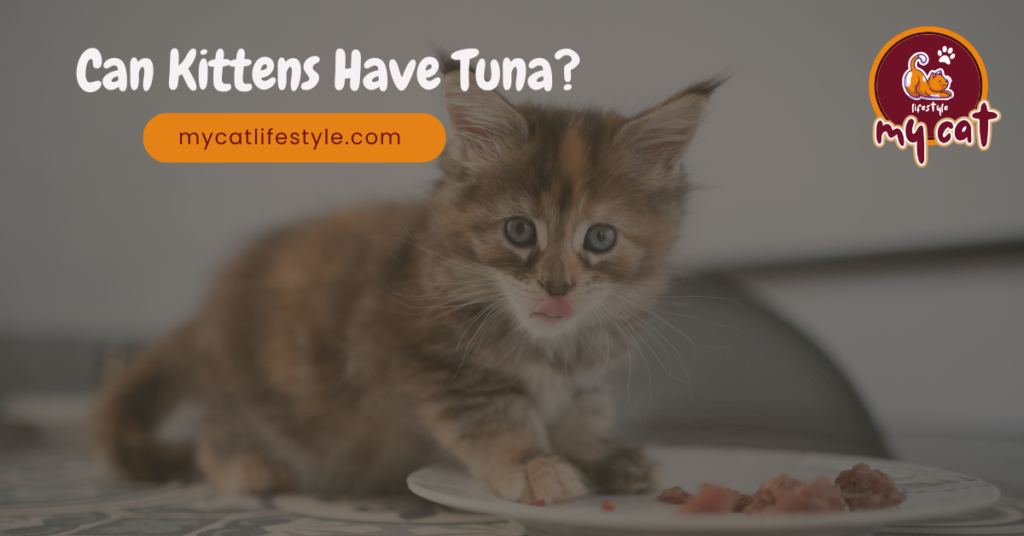
Kittens have specific nutritional needs for their growth and development, making it even more crucial to limit tuna in their diet. Offering tuna to kittens should be more infrequent, if at all, focusing instead on providing a high-quality kitten food that meets all their dietary requirements. If you choose to introduce tuna, wait until they are older and do so sparingly, always under the guidance of a veterinarian.
By understanding these aspects of feeding tuna to cats, you can ensure your feline friend enjoys this treat in the healthiest way possible.

How Tuna Can Affect Cat Nutrition
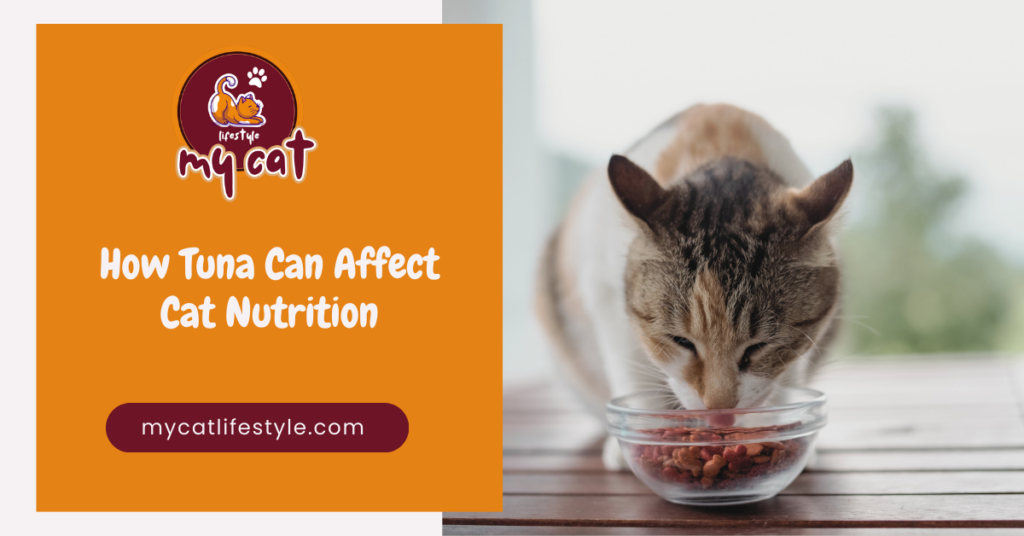
While tuna can be a tantalizing treat for your cat, it’s crucial to understand its impact on feline nutrition. Tuna, particularly the kind intended for human consumption, lacks several essential nutrients that cats require for optimal health. Feeding cats tuna on a regular basis can lead to nutritional imbalances with serious health implications.
Firstly, tuna does not provide a complete nutritional profile for cats. It is deficient in vital nutrients such as vitamin E, taurine, and various B vitamins. A diet high in tuna can lead to vitamin E deficiency, resulting in a painful condition known as steatitis, also known as yellow fat disease. Similarly, taurine, an amino acid found in animal tissue, is critical for heart health, vision, and reproduction in cats. A deficiency in taurine can lead to serious health issues, including dilated cardiomyopathy, a life-threatening heart condition.
Moreover, tuna’s high unsaturated fat content without the proper balance of antioxidants can predispose cats to oxidative stress and inflammation. This imbalance can affect a cat’s health in numerous ways, from skin conditions to more systemic diseases.
Another concern is the mercury content in tuna. While occasional servings of tuna are unlikely to cause mercury poisoning in cats, consistent consumption over time can accumulate to toxic levels, potentially leading to mercury poisoning. Symptoms of mercury poisoning in cats include loss of coordination, loss of balance, and in severe cases, kidney damage.
Additionally, the high sodium content in canned tuna intended for human consumption can be problematic for cats, especially those with underlying health issues such as kidney disease or hypertension. High sodium intake can exacerbate these conditions, making it important to limit the amount of human-grade tuna your cat consumes.

How Much Tuna Can I Give My Cat for a Week?
Determining the right amount of tuna to feed your cat each week is essential for maintaining their health and preventing nutritional imbalances. As a general guideline, tuna should constitute no more than 10% of your cat’s total weekly diet. Given that an average adult cat’s diet may range around 200 to 250 calories per day, the calories from tuna should not exceed this 10% margin.
For a typical cat, a few small chunks of tuna once a week is an appropriate treat size. This equates to roughly a teaspoon or two of tuna, ensuring that the majority of their nutrition still comes from a balanced, complete cat food. It’s vital to consider this limit as part of the broader diet to avoid overfeeding, which could lead to weight gain or nutritional deficiencies over time.
READ MORE: How much pumpkin to give my cat for constipation?
Can I Give My Cat Canned Tuna in Water?
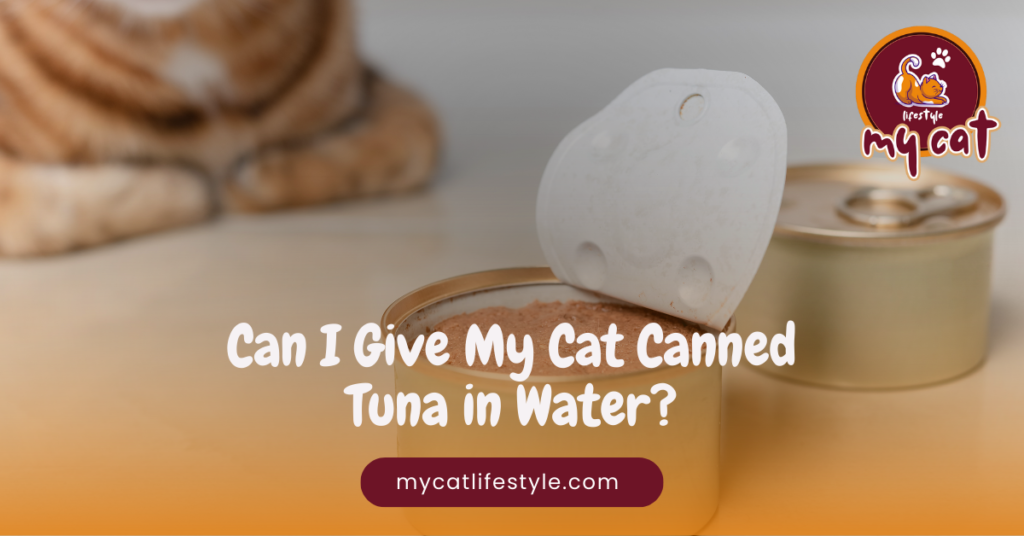
Canned tuna in water is generally safer for cats than tuna in oil or brine, mainly because it contains fewer additives and is lower in fat. However, it should still be considered an occasional treat rather than a staple of their diet. When choosing canned tuna in water for your cat, opt for no-salt-added varieties to minimize sodium intake, which can be harmful in large quantities.
While offering a small amount of canned tuna in water can be a delightful treat for your cat, it’s essential to remember that even this should be done in moderation. The concerns about mercury content and nutritional imbalance apply as much to canned tuna in water as to any other form of tuna. As such, it’s recommended to integrate it sparingly into your cat’s diet, treating it as a complement to, rather than a replacement for, their regular nutritionally balanced cat food.
Feeding canned tuna in water can occasionally be a good way to encourage hydration or stimulate appetite in finicky eaters, but it should never become a significant portion of their diet. Always monitor your cat for any adverse reactions, such as gastrointestinal upset or changes in behavior, and consult with a veterinarian if you have concerns about incorporating tuna into their diet, especially if your cat has pre-existing health conditions.
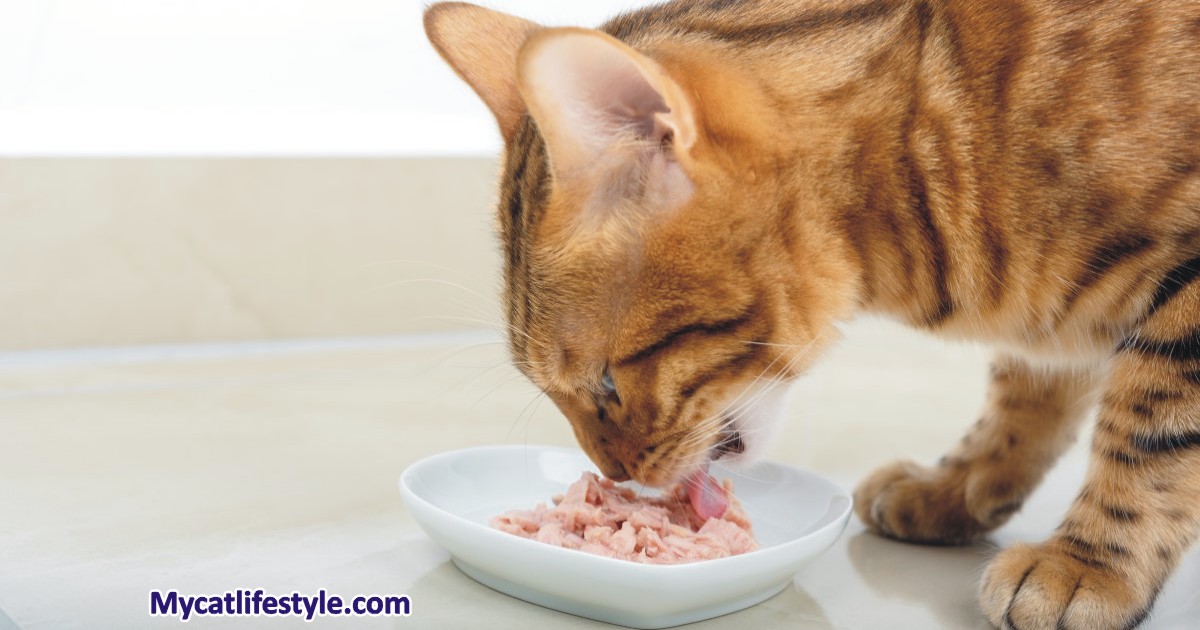
Can I Give My Cats Tuna Every Day?
Feeding your cat tuna every day is not advisable due to the potential health risks and nutritional imbalances it can cause. While tuna may seem like a harmless treat, especially given how much cats tend to love it, daily consumption can lead to several issues. These include exposure to high levels of mercury, a deficiency in essential nutrients like taurine and vitamin E, and the possibility of developing a strong preference for tuna over more nutritionally balanced foods. The cumulative effect of these factors can compromise your cat’s health over time, leading to conditions such as mercury poisoning, malnutrition, and even heart problems due to a lack of necessary amino acids.
It’s important to remember that a cat’s diet needs to be well-rounded and nutritionally complete to support their overall health and well-being. Tuna, especially in forms intended for human consumption, does not meet all of a cat’s dietary requirements and should therefore be limited to an occasional treat rather than a daily food source.
Tuna Alternatives
Considering the risks associated with feeding cats tuna on a regular basis, exploring safer and more nutritionally balanced alternatives is a wise choice. Here are some alternatives that can satisfy your cat’s craving for fish while ensuring they receive a balanced diet:
- Commercially Prepared Cat Foods with Fish: Many high-quality cat foods are made with fish and are formulated to provide a complete and balanced diet. These foods often include fish like salmon, sardines, or mackerel, which are high in omega-3 fatty acids and lower in mercury than tuna.
- Specially Formulated Tuna-flavored Treats: There are numerous cat treats on the market that are made to taste like tuna but are nutritionally balanced and made specifically for cats. These can be a great way to give your cat the flavor they crave without the health risks associated with actual tuna.
- Cooked, Unseasoned Fish: If you prefer to offer fresh options, small amounts of cooked, unseasoned fish such as salmon or mackerel can be a healthier alternative to tuna. Ensure the fish is cooked thoroughly and avoid using any oils, butter, or seasoning that could be harmful to cats.
- Fish-Based Cat Food Toppers: Liquid or moist cat food toppers made with fish can be a great way to enhance your cat’s meals with the taste of fish without relying solely on tuna. These toppers can add variety and flavor to your cat’s diet without the nutritional risks of feeding them straight tuna.
When introducing any new food to your cat’s diet, it’s important to do so gradually to avoid digestive upset. Always keep an eye on portion sizes and ensure that treats, including fish-based options, do not exceed 10% of your cat’s total daily caloric intake. This approach ensures that your cat enjoys a varied, appealing diet without compromising their nutritional health.
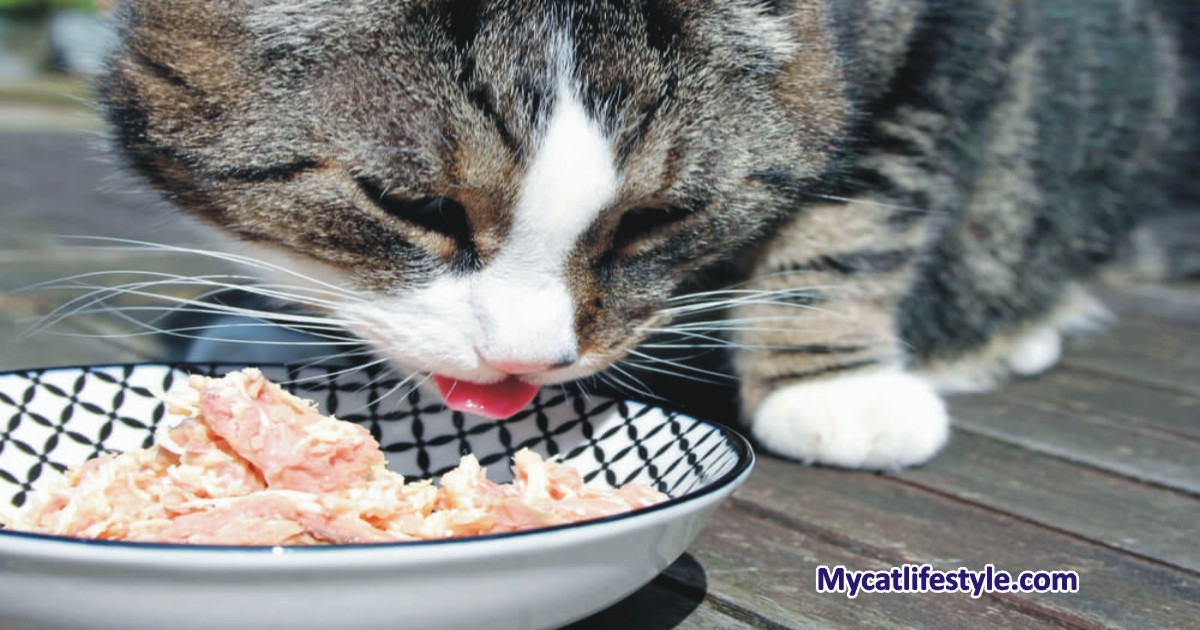
Can Cats Get Mercury Poisoning from Tuna?
Yes, cats can get mercury poisoning from consuming too much tuna, especially if it’s a regular part of their diet over a prolonged period. Tuna, particularly types that are larger and live longer, accumulate higher levels of mercury from their environment and diet. When cats consume tuna frequently, the mercury can accumulate in their bodies, potentially leading to mercury poisoning. This condition is rare but serious and can have significant health implications for affected cats.
Symptoms of Mercury Poisoning in Cats
Mercury poisoning in cats can manifest through a variety of symptoms, which may develop gradually as mercury accumulates in the body. Owners should be vigilant for signs of mercury toxicity, especially if their cat consumes tuna regularly. Symptoms of mercury poisoning in cats include:
- Loss of coordination and balance: Cats may appear unsteady on their feet or have difficulty jumping and navigating their environment.
- Gastrointestinal issues: Symptoms can include vomiting, diarrhea, or a general loss of appetite, leading to weight loss.
- Behavioral changes: Affected cats might display unusual behavior, such as increased lethargy, weakness, or changes in their normal activities and interactions.
- Neurological symptoms: In severe cases, mercury poisoning can cause tremors, convulsions, or seizures, indicating significant neurological impact.
It’s crucial to recognize that these symptoms can also be indicative of other health issues, so a definitive diagnosis from a veterinarian is essential if mercury poisoning is suspected. The diagnosis is typically based on a combination of clinical signs, dietary history, and, in some cases, testing for mercury levels in the blood.
If you suspect your cat has mercury poisoning, it’s imperative to seek veterinary care immediately. Treatment may involve ceasing the intake of tuna, administering medications to support the cat’s organs and systems affected by the mercury, and, in some cases, chelation therapy to help remove mercury from the body.
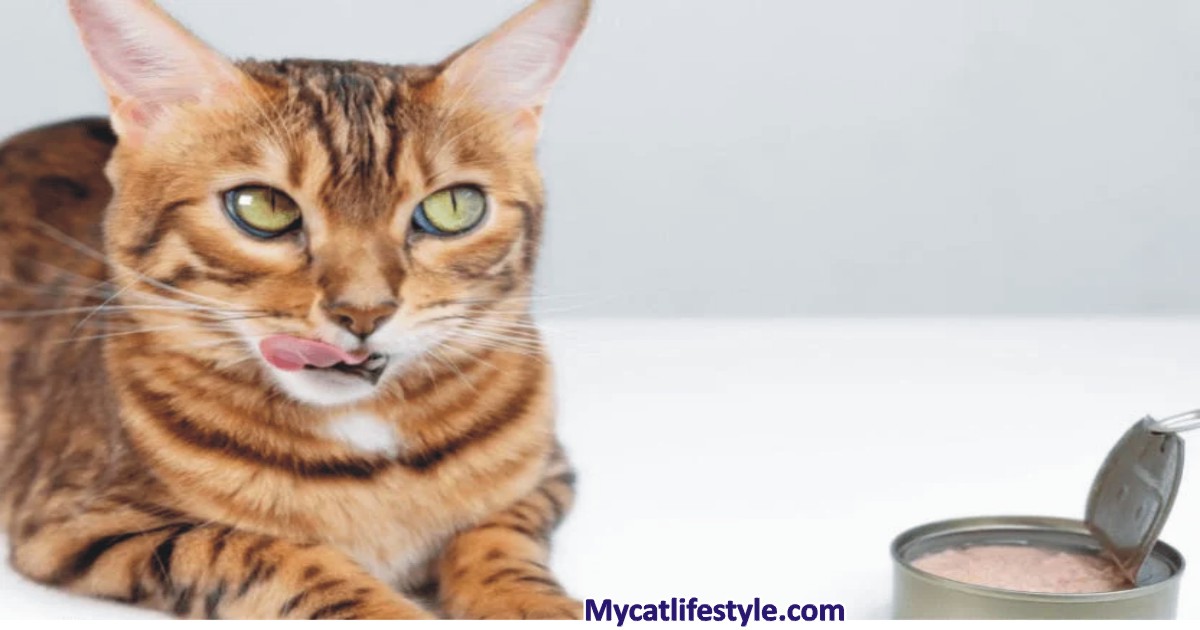
Safe Ways to Feed Tuna to Your Cat
Whenever you add a new food to your cat’s diet, it is a good idea to consult your veterinarian first. If your veterinarian approves your feeding your cat tuna, follow the same guidelines as you would for any other treat. Supplemental treats, such as tuna, should not exceed 10 percent of your cat’s daily calorie intake. Approximately 90 percent of your cat’s diet should consist of high-quality, complete and balanced cat food.
You should avoid feeding your cat tuna every day in order to avoid potential health issues associated with too much tuna consumption, such as the development of picky eating habits. Instead, feed your cat tuna only occasionally as an occasional surprise.






